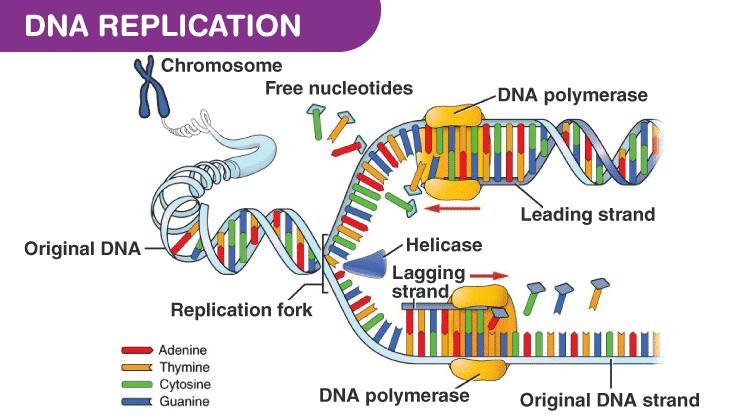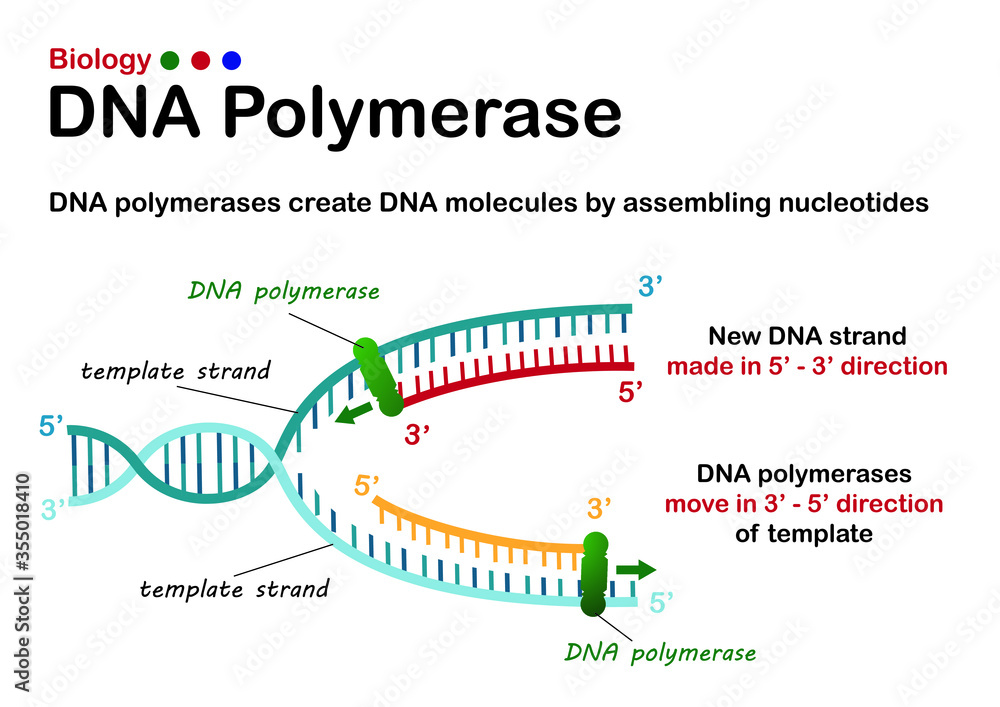The DNA Duplication Process: A Comprehensive Guide to Cell Replication
DNA replication is a fundamental process in cell biology that ensures the accurate duplication of genetic information. Understanding the mechanisms behind DNA duplication is crucial for comprehending cellular processes, inheritance, and the maintenance of genetic stability. In this comprehensive guide, we will explore the intricate process by which a cell duplicates its DNA, shedding light on the essential steps and key enzymes involved.
1. Importance of DNA Duplication:
Before delving into the details of the DNA duplication process, it's essential to grasp the significance of this cellular mechanism.
DNA replication is a vital process for cell division, growth, and the inheritance of genetic traits from one generation to another. It ensures that each daughter cell receives an identical copy of the parent cell's genetic material.
2. Initiation of DNA Replication:

DNA Replication
The DNA replication process begins with the initiation phase. Enzymes called helicases unwind the double helix structure of the DNA molecule, separating the two DNA strands.
This forms a replication fork, where DNA synthesis can occur. The enzyme DNA polymerase plays a central role in DNA replication by catalyzing the addition of nucleotides to the growing DNA strands.
3. DNA Replication Fork:
The replication fork is a crucial structure during DNA replication. It consists of two separated DNA strands, the leading strand, and the lagging strand.
The leading strand is synthesized continuously in the 5' to 3' direction, while the lagging strand is synthesized in short fragments called Okazaki fragments. The enzyme DNA ligase later joins these fragments together.
4. DNA Polymerase:

DNA Polymerase
DNA polymerase is an enzyme family responsible for catalyzing the synthesis of DNA strands during replication. The main DNA polymerase enzyme involved in replication is DNA polymerase III in prokaryotes and DNA polymerase delta in eukaryotes.
These enzymes possess proofreading capabilities, ensuring the fidelity of DNA replication.
5. Replication Proteins:
Alongside DNA polymerase, several other proteins participate in the DNA duplication process.
These proteins include DNA primase, which synthesizes RNA primers necessary for DNA polymerase to initiate replication, and DNA topoisomerases, which relieve the strain caused by unwinding DNA during replication. Additionally, single-strand binding proteins stabilize the separated DNA strands.
6. Leading Strand Synthesis:
The leading strand is synthesized continuously in the 5' to 3' direction, following the replication fork movement.
DNA polymerase synthesizes the leading strand by elongating the newly synthesized DNA strand using the parental DNA strand as a template. This process is relatively straightforward compared to the synthesis of the lagging strand.
7. Lagging Strand Synthesis:
The lagging strand is synthesized discontinuously in short fragments called Okazaki fragments. DNA primase initiates each fragment by synthesizing a short RNA primer.
DNA polymerase then elongates the RNA primer with DNA nucleotides. Once the Okazaki fragment is complete, DNA polymerase detaches, and another fragment is initiated. Finally, DNA ligase joins the Okazaki fragments to form a continuous strand.
8. Proofreading and Repair Mechanisms:
To maintain the integrity of the genetic information, DNA replication involves proofreading and repair mechanisms. DNA polymerase has an inherent proofreading ability, allowing it to detect and correct errors during DNA synthesis.
Additionally, mismatch repair systems and DNA repair enzymes play crucial roles in detecting and repairing any replication errors or DNA damage.
9. Completion of DNA Replication:
The DNA replication process is completed when the entire DNA molecule has been duplicated. The replication forks meet at specific termination sites, and the DNA strands are fully synthesized.
At this stage, the newly synthesized DNA molecules are identical to the parent DNA molecule, and each daughter cell receives a complete set of genetic information.
The DNA replication process is a complex and precise mechanism that ensures the accurate duplication of genetic material within cells. Understanding the steps involved in DNA replication, from initiation to completion, provides insights into the fundamental processes of cell division and inheritance. With the knowledge gained from this comprehensive guide, you can appreciate the intricate nature of DNA duplication and its critical role in maintaining genetic stability and diversity in living organisms.